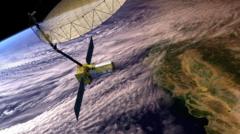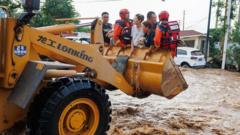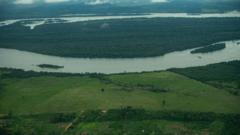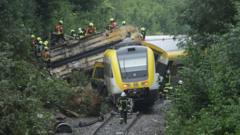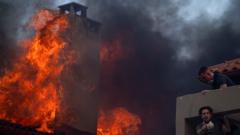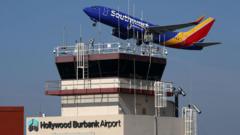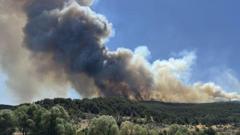The tragic wildfires in Los Angeles have left the community searching for answers, as investigators examine various theories including arson and the role of power company infrastructure in igniting the blazes.
Investigation Underway for Causes of Devastating LA Wildfires
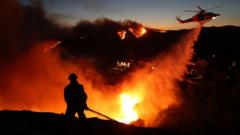
Investigation Underway for Causes of Devastating LA Wildfires
Authorities probe potential arson and utility negligence as Southern California’s recent wildfires wreak havoc on homes and communities.
The hiking trails of Temescal Canyon in Los Angeles, once a beloved retreat for locals, are now charred remnants of what once was. Surrounded by police tape, the area has become a "crime scene" as investigators explore the origins of a devastating fire that ravaged the Pacific Palisades, one of two major fires in the region that have left 27 dead and thousands of homes lost since igniting on January 7.
In nearby Altadena, another fire blaze has left a similar path of destruction, prompting a flurry of investigations. Specialists are sifting through evidence—rocks, bottles, and other debris—hoping to uncover how these tragedies occurred while residents remain in a state of uncertainty.
"How did this happen?” Angelenos are demanding answers, with speculation rampant across social media. Suspicions have targeted arsonists, utility companies, and the possibility of remnants from a previous fire that reignited due to high winds. The authorities, led by the Bureau of Alcohol, Tobacco, Firearms and Explosives (ATF), are pursuing numerous leads, but the timeline for resolution remains uncertain. According to Ginger Colbrun, a spokeswoman for the ATF, the investigation could extend up to a year.
Videos from local hikers, who witnessed the flames licking the hillsides, have emerged as crucial evidence. Their experiences have drawn mixed reactions, from support to harsh online criticism. The hikers, now fearful for their safety and reputations, assert their innocence, while the ATF emphasizes gathering all testimonies to build a clearer timeline around the fire's initial ignition.
In contrast to evidence of local fires, California fire authorities continue to monitor a larger incident involving the Eaton Fire that struck Altadena. Insights from residents like Jeffrey Ku have documented the initial moments of panic as the inferno approached, raising alarms about its proximity to utility infrastructure. Investigators now lend scrutiny to the metal utility tower seen in Ku’s footage, examining whether it may have played a role in the ignition.
Utility companies like Southern California Edison have faced scrutiny in recent years over similar incidents, including the catastrophic 2018 Camp Fire. Although now standing at the nexus of several lawsuits filed in the aftermath, Edison maintains its electrical systems were functioning correctly at the time of the ignition.
Cal Fire officials caution against premature assumptions while investigations continue. Gerry Magaña, deputy chief of operations, speaks to the potential chaos caused by false accusations, emphasizing the need for precision and responsibility in the unfolding inquiry.
As investigators work diligently to uncover the causes behind these extraordinary wildfires, Californians brace for what could be another year marked by uncertainty and devastation in their fire-prone landscapes.

